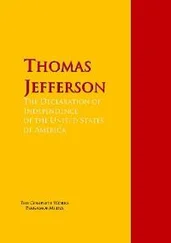Kendric Babcock - The Scandinavian Element in the United States
Здесь есть возможность читать онлайн «Kendric Babcock - The Scandinavian Element in the United States» — ознакомительный отрывок электронной книги совершенно бесплатно, а после прочтения отрывка купить полную версию. В некоторых случаях можно слушать аудио, скачать через торрент в формате fb2 и присутствует краткое содержание. Жанр: foreign_antique, foreign_prose, на английском языке. Описание произведения, (предисловие) а так же отзывы посетителей доступны на портале библиотеки ЛибКат.
- Название:The Scandinavian Element in the United States
- Автор:
- Жанр:
- Год:неизвестен
- ISBN:нет данных
- Рейтинг книги:5 / 5. Голосов: 1
-
Избранное:Добавить в избранное
- Отзывы:
-
Ваша оценка:
- 100
- 1
- 2
- 3
- 4
- 5
The Scandinavian Element in the United States: краткое содержание, описание и аннотация
Предлагаем к чтению аннотацию, описание, краткое содержание или предисловие (зависит от того, что написал сам автор книги «The Scandinavian Element in the United States»). Если вы не нашли необходимую информацию о книге — напишите в комментариях, мы постараемся отыскать её.
The Scandinavian Element in the United States — читать онлайн ознакомительный отрывок
Ниже представлен текст книги, разбитый по страницам. Система сохранения места последней прочитанной страницы, позволяет с удобством читать онлайн бесплатно книгу «The Scandinavian Element in the United States», без необходимости каждый раз заново искать на чём Вы остановились. Поставьте закладку, и сможете в любой момент перейти на страницу, на которой закончили чтение.
Интервал:
Закладка:
Another important and highly prosperous group of settlements, called Koshkonong after the lake and creek of that name, sprang up in 1840 and 1841, in the southwestern corner of Jefferson County, Wisconsin, and the adjacent parts of Dane and Rock Counties. The beginning was made by men who removed thither from the Fox River and Beaver Creek localities after investigating the lands in Wisconsin. In 1840 there were nine entries of land by Norwegians in the present townships of Albion, Christiana, and Deerfield, the usual purchase being eighty acres; the next few years saw the spread of the colony to the townships of Pleasant Valley and Dunkirk, from the influx of immigrants from Illinois and from Norway. 83 83 Anderson, Norwegian Immigration , 326 ff. Anderson quotes in full a letter from the United States Commissioner of Land Office giving date and extent of each entry by Norwegians.
After the stress and hardship of the first pioneer years, the fortunate choice of location in one of the best agricultural sections of Wisconsin told very promptly, and Koshkonong became “the best known, richest, and most interesting Norwegian settlement in America, the destination of thousands of pilgrims from the fatherland since 1840.” 84 84 M. W. Odland, Amerika , Jan. 15, 1904.
Many of the farms are still in possession of the families of the original settlers, whose children are prominent in business, professional and political circles.
The movement of the stream of Norwegian immigrants after 1845 was distinctly in a direction westward from the Wisconsin settlements; the land farther out on the prairies was better, tho it did not have the combination of timber and stream or lake which the early settlers insisted on having, often to their detriment, since land chosen with reference to these requirements was apt to be marshy. The fresh arrivals, after a few weeks or months in the friendly and helpful communities of early immigrants, were better prepared by a partial acclimatization, by knowledge of the steps necessary for acquiring citizenship and land-ownership, and by the formation of definite plans of procedure, for the next stage in the western course of their empire. Occasionally a shrewd farmer of the older companies took advantage of the rise in the value of his farm, sold out, and bought another tract farther out on the frontier, perhaps repeating the process two or three times. 85 85 Langeland, Nordmændene i Amerika , 44-45; Billed Magazin , I, 13.
John Nelson Luraas, for example, was one of those men who first spent some time in Muskego, then bought land in Norway, Racine County; after improving it for three years, he sold it in 1843 and moved into Dane County. 86 86 It may be well to note that the name of Dane county has no relation to Scandinavian settlement, but was given in honor of Nathan Dane of Massachusetts, author of the Northwest Ordinance of 1787.
Here he lived for twenty-five years, and then moved into Webster County, Iowa, taking up new land. After a few years he went back to his Dane County property, where he spent another thirteen years; finally, as an aged, retired, wealthy farmer, he died in the village of Stoughton in 1890. 87 87 Anderson, Norwegian Immigration , 276.
Provision for religious instruction and ministration was one of the early concerns of the Norwegian immigrants, as would be expected from a people essentially religious, who moved by whole families. Nor was there much distinction between the more orthodox and the dissenters. After their magnetic center shifted to the west in 1835 and the settlements and population multiplied, a good deal of lay preaching of one sort and another went on, – Lutheran, Methodist, Haugian, Baptist, Episcopalian, and Mormon. Lay services, in fact, were the rule all along the westward moving frontier, and services conducted by regular clergymen the exception. One of the Norwegians wrote: “We conducted our religious meetings in our own democratic way. We appointed our leader and requested some one to read from a book of sermons… We prayed, exhorted, and sang among ourselves, and even baptised our babies ourselves.” 88 88 A letter of John E. Molee, February, 1895, quoted by Anderson, Norwegian Immigration , 320. (See also, ibid. , 396-399.)
Cut off by language from much participation in English worship – a man must know an alien tongue long and thoroly to make it serviceable for religious purposes – the men from Numedal, Vos, and Drammen, felt keenly a great need for some one to instruct their children in the Norwegian language and in the Lutheran religion after the Old World customs. In 1843, two hundred men and women in the flourishing group of settlements around Jefferson Prairie, Wisconsin, signed a petition addressed to Bishop Sörenson in Norway asking him to send them a capable and pious young pastor, to whom they promised to give a parsonage, 80 acres of land, $300 in money, and fees for baptisms, marriages, and the like. 89 89 Anderson, Norwegian Immigration , 255.
Tho this petition itself seems not to have been answered, it was not long before a properly ordained clergyman arrived.
Claus Lauritz Clausen, a Danish student of theology seeking employment as a tutor in Norway, was persuaded, probably by the father of Sören Bakke in Drammen, to heed the call from America. 90 90 Nelson, Scandinavians in the United States , (2d ed.) 387 ff.
On his arrival in the West in 1843, he found the need for a pastor and preacher more urgent than for a teacher, and accordingly he sought and received ordination at the hands of a German Lutheran minister, October, 1843. 91 91 Bothne, Kort Udsigt , 835 ff.
He proceeded to organize, in Heg’s barn at Norway, the first congregation of Norwegian Lutherans in the United States, and so began a career of useful ministration which lasted nearly half a century. Not long after his ordination, its validity was called in question by strict Lutherans. The question was finally submitted to the theological faculty of the University of Christiania, which decided that “the circumstance that an ordination is performed by a minister and not by a bishop, cannot in itself destroy the validity of the ministerial ordination.” 92 92 Jacobs, Evangelical Lutheran Church , 411.
At any rate, Clausen’s activity, general helpfulness, staunchness of convictions, and length of service, if not his ordination, make him one of the typical pioneer preachers. 93 93 Bothne, Kort Udsigt , 835; Jensson, American Lutheran Biographies , “Clausen.”
Another clergyman of the same class as Clausen, was Elling Eielsen, a Haugian lay-preacher who went from place to place in the Northwest from 1839 to 1843, holding services with his countrymen. He was ordained in the same month as Clausen, and, like him, in a semi-valid fashion, by a Lutheran clergyman, not a bishop. 94 94 Brohough, Elling Eielsens Liv og Virksomhed , ch. II, and App.
Like Clausen, also, his term of labors as a Haugian apostle, passed forty years. 95 95 Nelson, in his Scandinavians in the United States , 388, is probably mistaken in stating that Eielsen built the first Norwegian church and organized the first congregation in 1842 at Fox River, confusing the fact that Eielsen had built a log house on his own land, and held religious services in the loft, with the possibility of the formation of a congregation. Eielsen’s biographer makes no mention of his organization of a regular congregation. Brohough, Elling Eielsens Liv og Virksomhed , 61.
Whatever irregularities in the ordination of Clausen or of Eielsen may have disturbed the consciences of the stricter of the Lutheran sect, nothing of the sort attached to the Rev. Johannes Wilhelm Christian Dietrichson, who arrived in 1844, fresh from the University of Christiania and from the ordaining hands of the Bishop of Christiania. He was a diligent, aggressive, zealous young man of about thirty, sent out as a kind of home missionary in foreign parts at the expense of a wealthy dyer of Christiania. For two years, summer and winter, he went back and forth in southern Wisconsin ministering to the Norwegians of all ages and beliefs, – and all for the stipend of $300 yearly. 96 96 Minde fra Jubelfesterne paa Koshkonong (1894), 54 ff; Bothne, Kort Udsigt , 839-842.
One of the results of these labors, was a little book, Reise blandt de norske Emigranter i “de forenede nordamerikanske Fristater,” in which Dietrichson gives the earliest detailed account of the settlements in Wisconsin and Illinois before 1846. He described the origin, numbers, conditions, and prospects of each community in his wide parish. At Fox River, he says he found about 500, who were of all creeds, mostly dissenters, including 150 Mormons.
Интервал:
Закладка:
Похожие книги на «The Scandinavian Element in the United States»
Представляем Вашему вниманию похожие книги на «The Scandinavian Element in the United States» списком для выбора. Мы отобрали схожую по названию и смыслу литературу в надежде предоставить читателям больше вариантов отыскать новые, интересные, ещё непрочитанные произведения.
Обсуждение, отзывы о книге «The Scandinavian Element in the United States» и просто собственные мнения читателей. Оставьте ваши комментарии, напишите, что Вы думаете о произведении, его смысле или главных героях. Укажите что конкретно понравилось, а что нет, и почему Вы так считаете.












